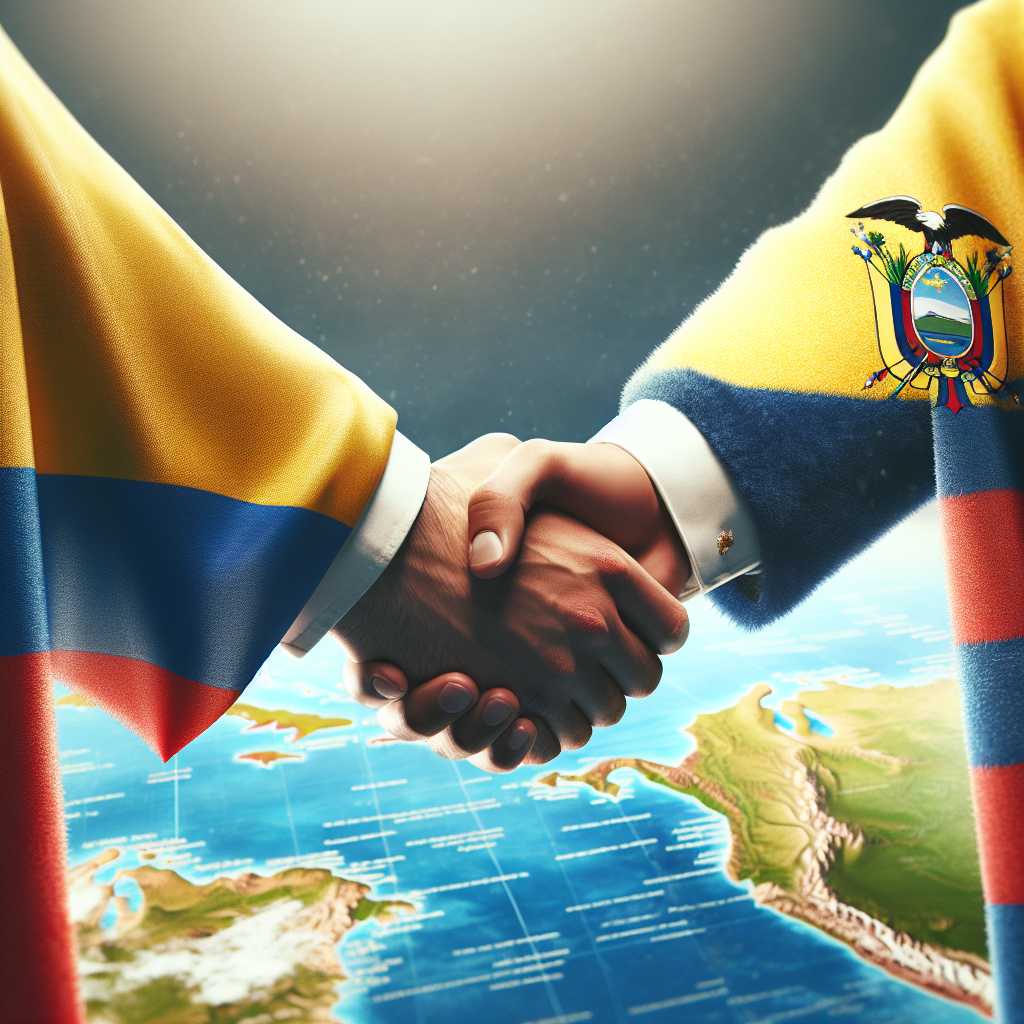The Diplomatic Relationship Between Colombia and Ecuador: A Comprehensive Overview
Colombia and Ecuador, two neighboring countries in South America, share a complex bilateral relationship characterized by various sociopolitical and economic interactions. With a shared history of Spanish colonization and cultural affinity, the nations have built ties that extend beyond just geographic proximity. This article delves into the multifaceted nature of the Colombia-Ecuador connection, exploring issues of trade, border disputes, environmental concerns, migration, and collaborative initiatives while highlighting the historical background that underpins their current diplomatic status.
Historical Ties and Shared Heritage
The countries have common historical roots that date back to the pre-colonial period when the Inca Empire expanded to cover parts of what is now Ecuador and southern Colombia. The subsequent Spanish conquest brought the areas that now constitute Colombia and Ecuador under Viceroyalty of Peru and subsequently the Viceroyalty of New Granada.
Colombia and Ecuador gained independence from Spanish rule in the early nineteenth century and initially formed part of the confederation known as Gran Colombia. This short-lived republic also included Venezuela but dissolved due to political differences, leading to the establishment of the Republic of Ecuador in 1830 and the Republic of New Granada, which later became the Republic of Colombia.
Political Relations and Diplomacy
Modern political relations between Colombia and Ecuador have encountered both synergy and stratifications. Economic agreements, shared infrastructure projects, and political dialogue forums stand testament to their ability to collaborate. However, there have also been challenges primarily linked to cross-border issues such as security threats and illegal trafficking, which have at times strained bilateral relations. Diplomatic efforts have often been tasked with overcoming such conflicts, seeking influence within international mediating agents like the Organization of American States (OAS).
Trade Agreements and Economic Interdependence
Economically, both nations stand as significant trade partners to each other with extensive commercial agreements that facilitate bilateral exchanges of goods and services. The trade relationship is governed by a variety of free trade agreements and understands within regional trade blocs such as the Andean Community (CAN) and, more broadly, as part of Latin American integration movements. Products such as petroleum, electronics, foodstuffs, and machinery account for substantial portions of this trade.
Environmental Issues and Collaborative Initiatives
Colombia and Ecuador share similar environmental concerns related to deforestation, threats to biodiversity, conservation practices in sensitive ecosystems like the Amazon basin—which they both partake in—and Andean highlands. Bilateral initiatives aimed at protecting these environments reflect an understanding of their mutual dependency in safeguarding natural heritage.
Migration and Social Dynamics
As neighbors with relatively porous borders, Colombia and Ecuador experience a significant amount of migratory flow between them. This has escalated during times of internal conflict in Colombia with refugees seeking safety in Ecuador. Conversely, economic stability in Colombia has also attracted Ecuadorian migration northward. Human mobility thus acts as a key component of their demographic interchanges.
Contemporary Challenges
Current challenges in the relationship between Colombia and Ecuador continually evolve due to political shifts within each nation, drug trafficking routes affecting regional security, infrastructure development affecting indigenous territories, humanitarian concerns raised by migrant populations, and global economic pressures that guide national policies. Addressing these challenges through dialogue forums that optimize peaceful coexistence remains essential in maintaining stabilizing interactions.
